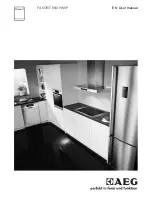
A. Stucki Company
2600 Neville Road, Pittsburgh, PA 15225
Phone 412.770.7300, Fax 412.771.7308
08072
www.stucki.com
Revision
001,
6/12/2007
INSTALLATION INSTRUCTIONS FOR STUCKI
®
HS-7-100 HYDRAULIC
STABILIZERS
I. INTRODUCTION
The Stuck HS-7-100 stabilizer is a single-acting hydraulic damper that
fits into the freight car spring nest and operates as the truck springs
are compressed. One unit is installed in each spring group in the
space normally occupied by the center position truck spring when
applied with a typical D-5 spring group. This stabilizer is designed to
function only under a loaded car condition, no damping occurs when
the car is empty.
The Stucki HS-7-100 center position unit should not be confused with
the Stucki HS-7, which is designed to fit in an outboard spring position
only. Figure 1 clearly illustrates the distinctive features of each unit.
Note particularly that the body springs are not interchangeable
between the two models.
Figure 1. Comparison of HS-7-100 (left) & HS-7 (right)
Standard HS-7-100's are designed for use on 100-ton freight cars.
They can be used with either D-5 or D-7 truck spring groups. Units
having damping characteristics suitable for 70-ton cars are designated
as HS-7-100-B's.
The model is identified on the unit serial number tag as shown in
Figure 2. Whenever a Stucki stabilizer is to be replaced, it is important
that it be replaced by a unit of equal capacity rating. Factory rebuilt
units will have the letters “RB” and the date they were rebuilt stamped
on the model identification tag.
Figure 2. HS-7-100 Identification
II. STORAGE PRECAUTIONS
Each HS-7-100 stabilizer is packaged in a manner that under normal
circumstances will prevent corrosion of the piston rod while in storage.
Units should not be stored outdoors any longer than necessary.
Incoming stock should be rotated, and units held in long-term storage
should be protected from moisture. Units which have been stored for
long periods should be inspected for any signs of rust on the chrome
surface of the piston rods before using.
III. SPRING GROUPS
For optimum performance the HS-7-100 must be applied with the
proper combination of truck springs. A. Stucki company's general
HS-7-100 truck arrangement drawings list recommended groups for
conventional applications. In special cases where cars are to be used
in assigned service for loads which will consistently be significantly
greater or less than their rated capacity, Stucki Company should be
contacted for a compatible spring group recommendation.
When stabilizers are applied on a retrofit basis to older cars the
existing truck springs if re-used, should be load or height checked
according to AAR Specifications.
IV. INSTALLATION OF THE HS-7-100 INTO TRUCK
Figure 4 shows an HS-7-100 in a conventional combination type
7-position spring nest. Note how the stabilizer reservoir utilizes the
free space between the center spring position and the side coil
positions. With some rare exceptions (which should be approved by A.
Stucki Company), this is the only spring arrangement that permits the
use of the HS-7-100.
In most cases installation of the HS-7-100 requires no modification of
the truck bolster or side frame. However, some Barber or S-2 type
bolsters will have a spring centering boss at the
center position which
must be removed as indicated in Figure 3.
Figure 3. Removal of Spring Centering Spud
Once the installer has checked that there are no projections on the
side frame or bolster that will interfere with the flush seating of the
stabilizer, the unit can be placed into position as follows:
1.
Install all but outboard row of truck springs in their respective
positions (see "spring groups").
2. Remove HS-7-100 from shipping bag and remove cardboard
sleeve from the piston rod (in all cases where unit exchange is
being made, sleeve should be installed over piston rod of unit
being removed from car, to protect it during shipping).
3.
Place body spring on unit as illustrated in Figure 1.
4.
Position unit, piston rod up, in truck as illustrated in Figure 4.
Make certain sight window is facing outward (toward installer).
5.
Install remaining truck springs




















